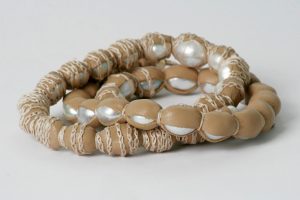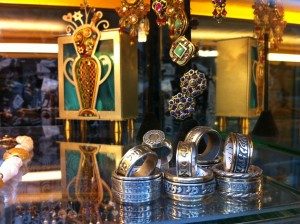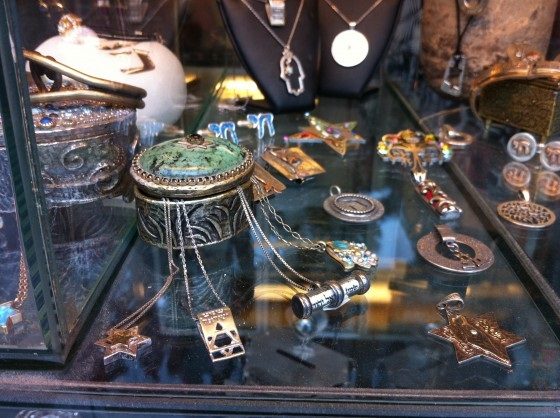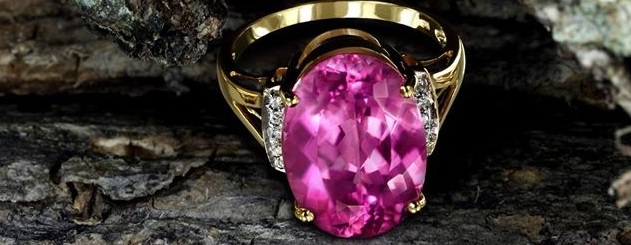It has been argued that jewellery can reflect the society of which it is a part. It is an interesting reflection that is expressed in different ways in different cultures. African jewellery differs substantially from Indian jewellery for example. Today I will take you for a jewellery exploration of fashion design and jewellery of Israel.
At the beginning, it was the Islamic craftsmen who in the region were in charge of making small jewellery-souvenirs for the Christian pilgrims who passed through Jerusalem. During the Zionist movement, the Bezabel School of Arts and Crafts was founded, becoming the site that most influenced the jewellery of Israel.

Tal Frenkel Alroy – Pearless. Another take on a classic status symbol – the pearl. Photo: Ana Morin. Bezalel Academy of Arts & Design
The school began with “Hebrew” motifs, for example, the design of jewels inspired by the letters of the Hebrew alphabet. With the arrival of Nazism in Germany, many of the German Jews who managed to leave the country, arrived in Israel bringing with them a strong influence of the “Bauhaus” where simplicity and modernist forms prevailed.
After the state of Israel was established, immigrants from all over the world arrived in the country. Each sector had its own cultural roots which were also expressed in jewellery. Immigrants from Yemen, for example, had a centuries-old Islamic jewellery tradition, which at the same time was “adjusted” to the taste of women of the time by other jewellery artisans. The pieces were dismantled and reassembled in a more contemporary way. One of the first contemporary designers who echoed traditional styles using non-traditional components was Finy Leitersdorf.

In the 60’s experimentation began with different materials such as Plexiglas and found objects, at times integrating them into a native design that had its development for decades. Here the influence of the “Bauhaus” began slowly to be diluted and the Israeli jewellery went on to define itself insisting on the multiculturalism of its roots and impelling a totally new movement. The four pioneer designers are the most internationally known representatives of contemporary Israeli jewellery:
Bianca Eshel Gershuni, Vered Kaminski, Esther Knobel and Deganit Stern Schocken. The four belong to the generation of those born in Israel.

Indeed it can be said that jewellery in Israel has come a long way from the initial Hebrew jewellery but it is interesting to see today that there are still many influences on the use of plants or religious images but now elaborated in a more abstract way. These pieces are inspired by both urban and rural Israel. They are works in many cases narrative, as the case of the necklace of Knobel that “resembles the collars of pine needles made by the children of Israel”. Since it is a country where the conflict has always been omnipresent, the issue of war is also a variant in creations. This is how we see protective steel mesh or crushed beverage cans among the materials used in the creations.
At the start of this article I cited the book “Jewellery in Israel” from the historian Iris Fishof “, a recommend read for further exploration on this fascinating part of Israeli history.






